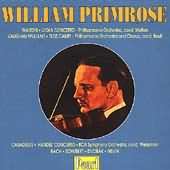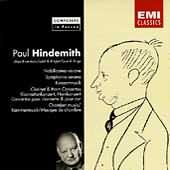

Recordings:which ones are best? |
||||||||||
| "What
are the best recordings for XY viola concerto?" Sometimes I get asked
this question by some visitors of this website, so I've decided to make
this page. So, my favourite
recordings are the "old" ones (made up to the '50s-'60s), also
called historical,
and live recordings (which are
quite rare nowadays) made also more recently and I'm not referring only
to viola
or classical music but to all records. The reason I
prefer these is that they are real,
like a live performance, while
modern ones sound a bit artificial to me. How are recordings made?The first commercial sound recordings were made at the end of the 19th century: in 1878 Edison patented the phonograph cylinder, with recordings made on wax cylinders. About ten years later, the double sided disc was invented, and then from about 1910 to 1950s the 78 rpm (revolutions per minute) disc was the standard. Then came the 45 and 33 rpm discs, that lasted 'till the 1980s, when the CD (compact disc) started to be used and replaced them. In the 1940s also magnetic tapes became commercially available and became the basis for the production of most commercial recordings (discs). More recently we have seen the electronic files and players we all know and use today. At the beginning, recordings were very short, the cylinders and discs could reproduce only two minutes of music. With the advancement of recording and discs production techniques, it was possible to produce discs of longer and longer duration, with four to maximum seven minutes of music on the 78 rpm disc. Still, to listen to a symphony by Beethoven, for example, one had to flip several 78 rpm discs and bear many interruptions. The 33 rpm disc (appropriately called "long-playing", or LP) was a very important innovation, as it could contain around 23 minutes of music per side, making it possible to reproduce a whole symphony or concerto on one disc, with only one interruption. Therefore 33 rpm discs were initially generally used for classical music, while 45 rpm discs were used for single songs. Recordings were made in
one take,
that is, performers had to perform a piece of music from the beginning
to
the end, as perfect as possible. If something went wrong or there was a
mistake, they had to redo the whole 4 to 7 minutes of performance and
recording again. The same initially applied to longer performances for
33 rpm discs. With more
sophisticated recording technologies, sound engineers were given the
opportunity to "cut and paste"
a recording in order to correct mistakes
without having to re-record the whole composition or movement. So the
performer, be it a soloist or group or orchestra, could perform a
movement (or part of it)
several times, and the sound engineers could take the best bits from
the
several recordings and join them to create the "perfect" performance,
with
no mistakes. Initially, they had to physically cut and paste the tape,
but now everything is done electronically. Now everything can be
modified and improved: in the past, the notes pitch
could not be modified, so the notes were either in tune or not; now it
is
possible to correct every single note in case it's slightly out of
tune. Speed could not be
modified, as this would have affected the pitch; volume and balance between instruments can be
modified now; special effects
can
be added: a recording can be done in a studio with no reverberation at all and then have
the "St. Paul's Cathedral" or "Westminster Cathedral" or other
reverberation effects added. So you can see the difference: a recording of an
uninterrupted performance is like a live concert, the performer is
focused on the whole work and musical communication, putting all
his/her concentration, energies and emotion into it. Instead, when performers have to repeat only short
passages of a work, sometimes even only a few bars, to produce a
perfect performance, they cannot have
the same concentration and the same emotional involvement of a live
performance. Also, with old and live recordings you know that what you hear is really what the performers were able to do, it's all their merit and not the sound engineer's merit. I
don't mean to say that all performers are not good
players, however even a quite bad performer now could make a good
recording, with the help of good sound engineers. Actually, the best
performers can and do try to make as least cuts as possible, because
they know the risks of recordings with too many cuts. However, even
very good performers in a live concert sound different from their own
recordings. Therefore, in old and live recordings you can have some
noises and
imperfections but also more spontaneity. I find that many (not all)
modern
recordings are just "too perfect", everything is OK, no mistakes but
also no emotion, they don't touch me, don't move me. Now, knowing what's behind recordings, try and listen to
some old or live recordings and you'll notice some differences. Being
this a website about the viola, I can't help saying that my favourite
viola recordings are those by William
Primrose.
Live Recordings
Modern
live recordings, with this I mean a recording made at a public concert
or performance, are very rare, especially those of classical music, for
the reasons mentioned above. Leonard
Bernstein
used to like doing live recording, exactly for the same reasons. Some
live recordings were made at some special occasions, such as the
concert with Beethoven 's Ninth
Symphony for the fall
of Berlin wall, conducted by Bernstein.
|
Find what you are looking for, use this search box

|
|

William Primrose plays:
Brahms, Viola sonatas;
Hindemith,
Der Schwanendreher
Mp3

William Walton conducts
Walton Viola Concerto
W. Primrose, viola Mp3
Performing Music in the Age of Recording
"Performing Music in
the Age of Recording"
is
the title of a very interesting book I read recently. It is a big book
but it's full of anecdotes so it's easy to read. It analyzes how
recordings have affected performers' and audience's attitude to live
performances.
On one side, recordings have contributed to raising the quality of
musical performances, as a performer doesn't want to leave a permanent
memory (a recording) of him/herself as a "bad" performer.
The pianist Ferruccio Busoni is also mentioned: he said that whenever he played Beethoven's 5th piano concerto, after the opening piano chords and cadenzas, the audience would invariably clap.
I discovered similar information also from other sources. Hector Berlioz in his Memoirs tells that the audience used to ask him to repeat the March to the scaffold, from his Symphonie fantastique, and address the performers with their comments, loudly.
Reports of Paganini's concerts refer, as something unusual and exceptional, that when Paganini played everybody was silent, such was his mesmerizing power.
More recently, Lionel Tertis refers in his My viola and I, that on one occasion when he performed a viola concerto the audience wanted an encore and the conductor announced that they were going to repeat the whole viola concerto and they did it!
Historical recordings for viola
Here
are a few more recordings for viola, in addition to those you've seen
earlier on this page. If you've never listened to historical
recordings,
you may find them somehow "strange" at first. There may be some noises,
it's also because the
overall sonority is different, not stereo, performing styles change
over time, (like everything else). It's like
looking at old photos of those years: old cars, different clothes,
hats, hairstyles. The more old photos you see, the more they become
familiar to you, I wish you to enjoy them more.
 William Primrose plays Berlioz's Harold in Italy, Mp3 |
 William Walton Concerto for viola CD, William Primrose, viola William Walton, conductor |
 Composers in person, CD Composers in person, CDHindemith plays Hindemith |
 Lionel Tertis, viola, plays Dohnányi, Brahms, Handel |
 Lionel Tertis, viola: Mozart, Schubert, Dvorák... Lionel Tertis CDs |
 Viola recital: Hindemith plays Hindemith,Beethoven, Mp3 |
| Get more Primrose's Mp3 | More CDs of William Primrose |
Find what you are looking for, use this search box

Bernstein, Mp3



New! Comments
Have your say about what you just read! Leave me a comment in the box below.